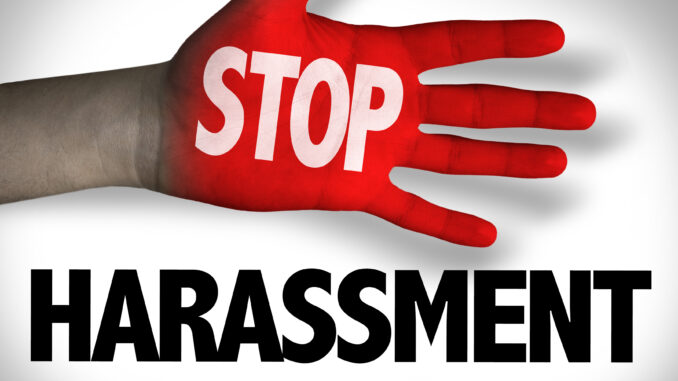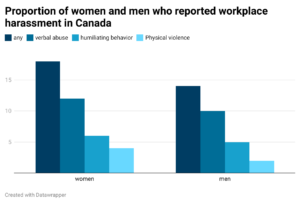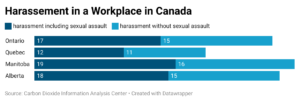
“I did not know at first that I was the victim of harassment in my workplace, I had to suffer several times before I realized it” shared Reem, 26 years old, and one of the 42% of Canadians reported to be victims of harassment in their workplace. In a 2018 study. called Harassment in Canadian workplaces, Statistics Canada (Statscan) says, women are reporting higher levels of workplace harassment than men. 19% of women reported that they had experienced harassment in their workplace while 13% of men reported being victims of the intimidation form of harassment.
Harassment can be seen in several forms: violence, religion, discrimination, cyberbullying, revenge, power harassment, and intimidation. In the last two years, in most cases, harassment in the workplace is made by a manager or employer against an employee.
According to Statistics Canada, Manitoba is the province that registers the most workplace harassment without sexual harassment at 19% and harassment with sexual assault at 16%.
There is therefore most of the time an abuse of power. Reem who worked in the same company for 5 years now, was afraid to speak about her situation to a professional such as a lawyer or a therapist. According to statistics Canada, employers who harass their employees know that they need the job, so they abuse them and in most situations, they are not reported because the victim, in this case, the employee is afraid to speak. “I did not say to myself that I need to talk about the situation to a professional”.
Reem used to talk about what she was going through at work with her friend but not with her co-workers. She was afraid that if she complained about the harassment and that she was a victim, her employers would fire her. As an international student, she could not think about losing her job at that time. ” I am new in the country, I need money so I just accepted the situation at first”.
There are significant sociodemographic characteristics of workplace harassment such as income, education, marital status, physical mobility limitations, or visible minority status. According to statistic Canada, the probability of being a victim of harassment in their workplace was lower among the people who had a bachelor’s degree than those whose highest level of education is a high school diploma.
According to statistic Canada, in the past year, a visible minority said they were less likely to have experienced workplace harassment. It was also demonstrated that in Canada, married people were less likely to be victims of workplace harassment than single or never-married people.

Harassment in the workplace has consequences on every part of the company: the workplace environment, the employees, or the efficiency of the work provided. In fact, harassment in it is various form create a work environment that is not comfortable to work in. Fears, worries. Employees do not feel psychologically safe to work; this is also an issue when it comes to the ability of the employee to bring up their concerns, share their ideas or even contribute to their workplace culture. The effect of harassment at work affects the well-being of the employees as well. They will easier fall into depression and the cost will be associated with high-level absenteeism, loss of productivity, or job turnover. The harasser might not be aware, but his actions can lead the company to failure.
If no actions are taken, harassment will be created unsafe working conditions and will lead to employees leaving, media attention, and bad publicity for the company or even lawsuits. This is the reason why workplaces need to take an active approach to harassment by not just talking about it but by encouraging employees to report it and putting initiatives in place to prevent it actively. The questions that we could ask a lawyer, in that case, would be if an employer can fire an employee if he knows that the harassment has been reported. If he does, can an employee pursue him for abuse of power?
In Canada, each province respective occupational health and safety laws require that employers train every people in the company including workers and supervisors on recognizing preventing, and reporting harassment annually. They all need training about harassment even if each province has its own law with varying language.
Despite that, Reem does think that employees should receive the strongest training regarding harassment at work because, in most cases, the employee is not even aware that they are going through those kinds of situation, they will categorize some abusive behavior from their employers as “authority” while it is a typical case of harassment. In Ontario, according to the Occupational Health and Safety Act: “ 32.0.2 (1), An employer shall develop and maintain a program to implement the policy with respect to workplace violence required under clause 32.0.1 (1) (a). 2009, c. 23, s. 3.”
https://shared-assets.adobe.com/link/ca744c34-0638-4d89-44d5-3a485f8db8e0


Be the first to comment